Who was Jordan Neely, the New York subway victim? A 'young man in real crisis,' advocates say
As those who knew him seek justice for his death, advocates say the challenges and dangers Jordan Neely faced are not unique
The public should focus on the needs of people experiencing homelessness and mental illness to understand the tragic, sudden and violent death of Jordan Neely on the New York City subway, lawyers and homeless advocates say.
Attorneys for Neely's family said Neely, 30, began experiencing mental health problems at age 14 when his mother was brutally murdered.
Neely's mother was strangled at age 36 by her boyfriend in the apartment where she and her teen son lived, the family's lawyer Lennon Edwards told USA TODAY. When Neely tried to say goodbye to his mother before leaving for school the day of her murder, he didn't know her fate — he only knew that her boyfriend had told him he couldn't enter the bedroom where his mother's body was, Edwards said.
When Neely returned home from school that afternoon, he learned his mother's body had been stuffed in a suitcase and dumped in the Bronx. Her murderer was sentenced to 30 years in prison.
"That's the kind of trauma that can cause anyone to unravel," Edwards said. "This is a family that's extremely burdened."
Now, Neely's own death has also been ruled a homicide by a medical examiner.
Lawyers for Marine veteran David Penny, 24, said he acted in self-defense when he put Neely in a chokehold on May 1 after the well-known subway performer and Michael Jackson impersonator began acting erratically on the F train. Penny has not been charged, and authorities have not released key details about the incident.
But advocates for Neely say a cycle of violence, mental health problems and poverty were what led to the tragedy aboard the subway.
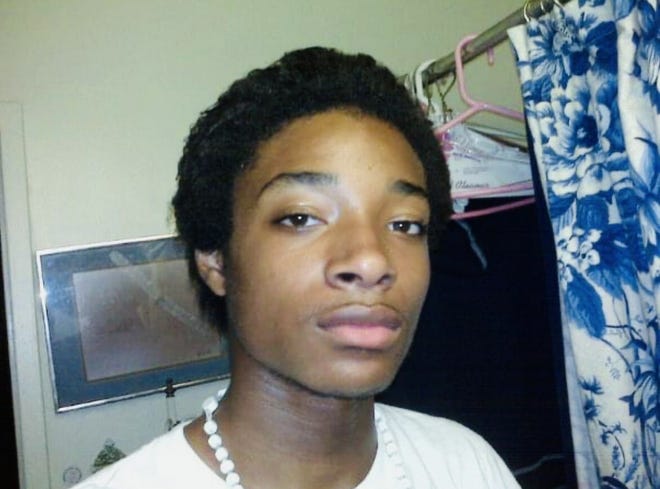
"Jordan Neely was a survivor of violence," Jamila Hodge, executive director of the national violence prevention group Equal Justice USA told USA TODAY. "If we can see him first as a survivor of violence, it gives us a different perspective on what happened in the subway and helps us understand the trajectory his life had taken over the past 16 years."
Who was Jordan Neely?
Neely grew up in a family of musicians who want him to be remembered as a "human being," Edwards told USA TODAY. His mother was a professional singer and his father performed with a music group. Neely also had a flair for song and dance, which he would pursue into adulthood.
"He was someone who loved and enjoyed people and life," Edwards said.
Later in his life Neely was known locally as a Michael Jackson impersonator who danced in the Times Square transit hub and was a beloved part of many New Yorkers' daily commute. By then, he suffered from depression, according to Edwards.
"What he could have been, the world will never know," Edwards said. "But we do know that he was someone who should have had an opportunity and a chance, a chance to recover — a chance to turn his life around, a chance to fulfill a dream that he had as a child. You can't be around music without wanting to be a part of it and be in it."
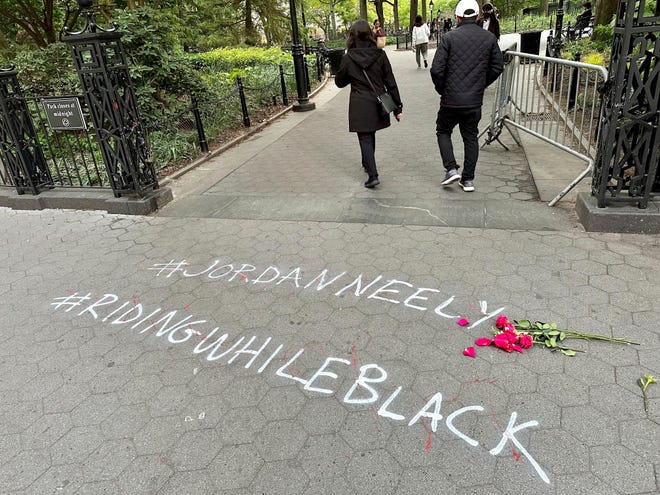
Neely experienced homelessness "intermittently" leading up to his death, according to Edwards. He spent some time living with an aunt, some time at a shelter and some time on the street.
When he was killed, Neely "still had a dream, and still wanted to accomplish something, and still had motivation to do it," Edwards said. "Where he was in the process it's hard to say, but he still had aspirations."
Tari Tudesco, a backup dancer in the Michael Jackson tribute act “Michael’s Mirror,” said many in the street performance community were searching for Neely, worried about his absence in recent years.
“We were in shock to find now that he was living homeless,” she said. “We feel terrible.”
In a Wednesday press release, VOCAL-New York, a grassroots political organization fighting for the needs of low-income people, said Neely's death came after elected officials "successfully campaigned to keep poor people in jails" and "flooded our subways with cops." The organization also said Neely's death is the direct result of "abandonment and dehumanization of people experiencing homelessness and mental health complexities."
What happened in the moments leading up to Jordan Neely's death?
Officials have not provided a detailed account of what happened Monday. But witnesses and statements from lawyers paint an incomplete picture of a subway incident that quickly escalated into an extended, fatal chokehold.
While riding the subway, Neely had been yelling about how hungry, thirsty and "fed up" he was before Penny held him in a chokehold for 6 to 15 minutes on the floor of the train car, according to interviews Edwards and his legal team conducted with witnesses, the lawyer said.
In a statement released Friday, Penny's lawyers said he "never intended to harm Mr. Neely and could not have foreseen his untimely death."
Witnesses told police Neely had been acting "hostile and erratic" toward other subway passengers when he was approached by Penny, the New York Times reported.
But Neely had not assaulted anyone, according to the bystander who filmed the video, the New York Times reported.
'Calling out for help'
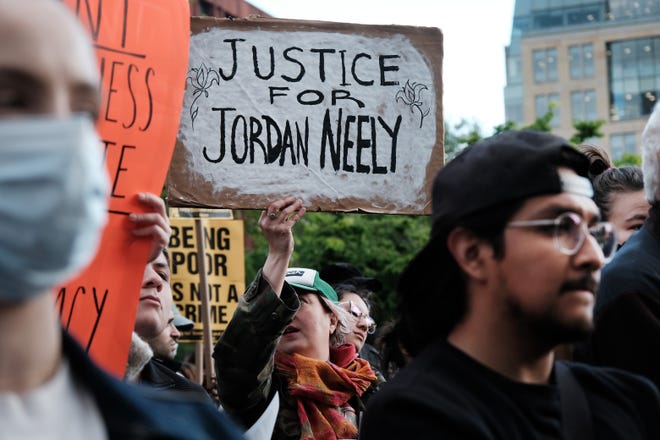
Jeff Olivet, the director of the White House Interagency Council on Homeless, told USA TODAY the council "in the strongest possible terms condemns the heinous and vigilante murder of Jordan Neely and calls for justice for Jordan and his family."
"It’s pretty clear this was a young man in real crisis, without a home, calling out for help," Olivet said. "The traumatic experience of homelessness itself is very hard on people's mental health, exacerbating depression, anxiety, psychosis and other illnesses."
In a Facebook post describing the incident, a bystander says Neely had said, "I don’t have food, I don’t have a drink, I’m fed up."
Olivet and Hodge said Penny's violent, lethal chokehold was an unacceptable stand-in for a public safety response that was lacking Monday afternoon in the subway.
"We have to redefine safety as something more than the absence of violence — but the presence of thriving communities, the presence of well-being, where people can have their needs met," Hodge said. "The things that he was asking for in that car, what if someone had just given him what he was asking for, something to drink, something to eat?"
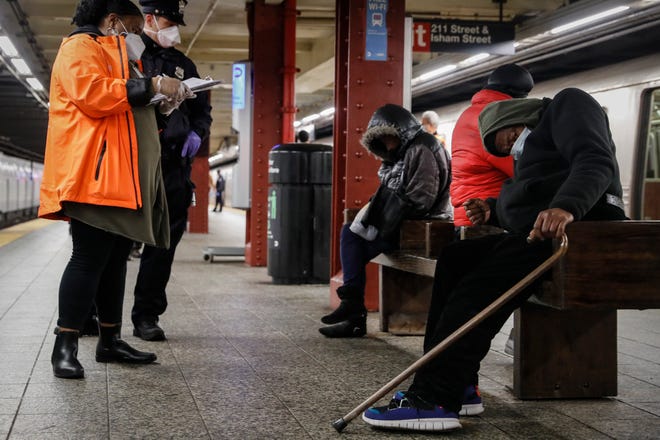
A New Yorker in need should never have been killed, advocates say
Advocates are calling for justice for Neely after New York City police released Penny following questioning Monday.
“What public safety looks like is when everybody has all of their basic needs met and they don’t have to fear for their lives," said Eric Tars, legal director for the National Homelessness Law Center.
In a Friday press release, the law center said Neely's death is directly linked to the fact that people of color are overrepresented among the U.S. homeless population, and that people experiencing homelessness are routinely criminalized.
"It is no coincidence that Jordan was murdered on the subway, because the NYC subway system has long been the target of dehumanizing campaigns that condition the public to view unhoused Black men as disposable," the law center statement says.
New York City Mayor Eric Adams has called for the investigation into Neely's death to take its course, noting "we cannot just blatantly say what a passenger should or should not do in a situation like that," when asked on CNN whether it's appropriate for subway passengers to take certain situations into their own hands.
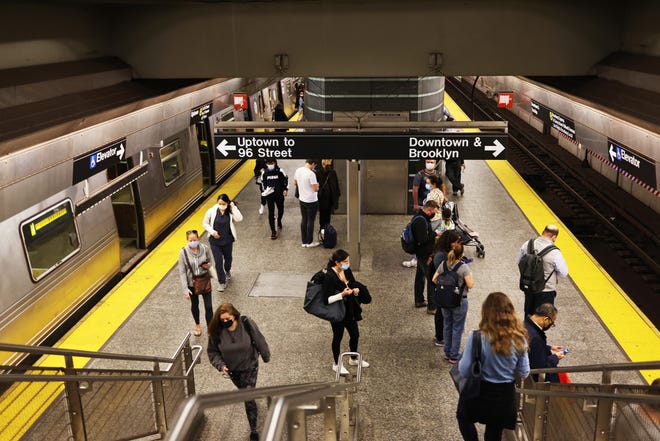
Unhoused people are target of fear in NYC subway, advocates say
The New York City subway — where many unhoused people often take refuge — has been the site of several killings of unhoused and housed New Yorkers in recent years.
Tars said rhetoric last year from Adams and other lawmakers likely drove up public fear of unhoused people experiencing mental illness on New York subways.
Last year, Adams announced law enforcement could involuntarily hospitalize unhoused people with severe mental illness "who pose a risk of harm to themselves, even if they are not an imminent threat to the public."
The policy's proponents, including Adams, say it's a "compassionate" response to the homelessness crisis. But it overemphasizes using force to restrain people who may be experiencing homelessness, and because of that, Neely's death was predictable, Tars said.
"We predicted this when the mayor of New York was riling up people’s fears, telling people that people experiencing homelessness with mental health issues were dangerous and a threat," he said.
The law firm representing Neely's family said in a statement it understands "our current times have created a heightened sense of fear (sometimes reasonable, sometimes not). However, there has to be a clear line of when lethal force can be used by anyone, including civilians."
Now, a Manhattan District Attorney will determine whether Penny intended to harm Neely when he administered the chokehold. The question will be decided based on whether a "reasonable" New Yorker would have also acted in self-defense in the situation.
Hodge said she also wants to know: "Why were people so afraid" Monday afternoon on the F train.
"Fear is used to justify so much," she said. "Fear has justified the control and killing of Black people in particular since the times of slavery. And fear to me has really gotten out of hand lately," she said, referencing other recent instances of vigilantism in which people were killed for turning into the wrong driveway or for knocking on the wrong door.
Contributing: Christine Fernando, USA TODAY; The Associated Press
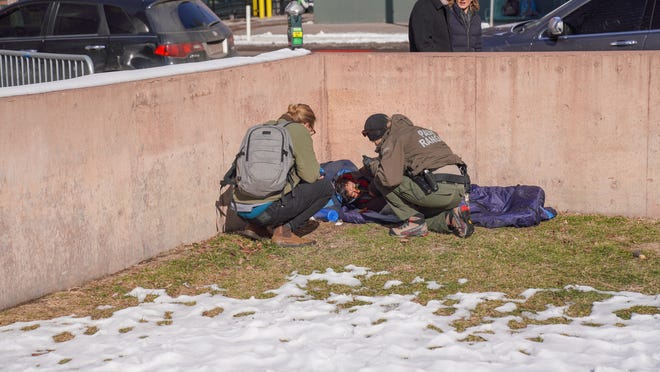

No comments: